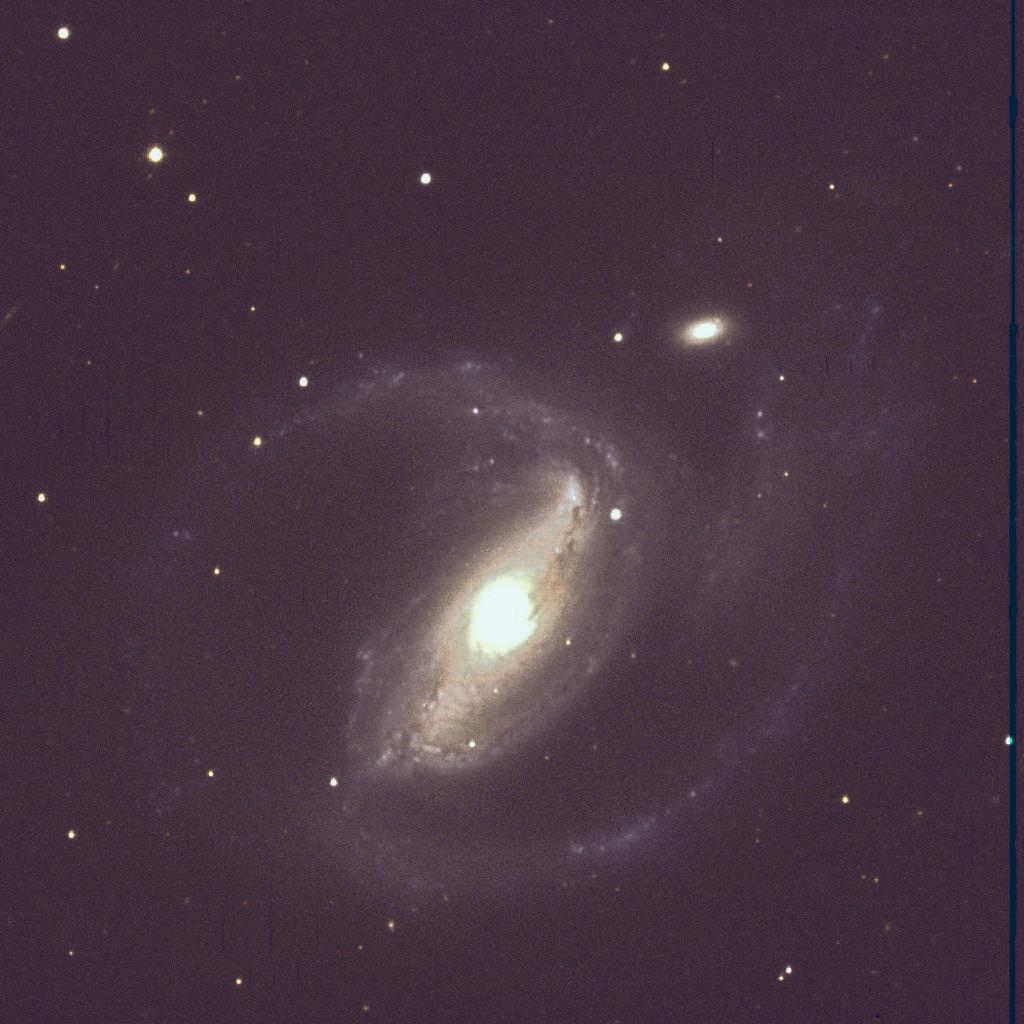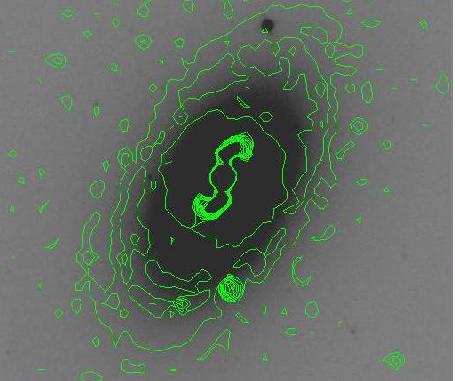LEGS, the Local Early-type Galaxy Survey
Boring Galaxies

Galaxies come in a variety of shapes. The most photogenic are the spirals,
with great blue arms of molecular gas and star formation, so you see more
pictures of those in textbooks than other types. At left is NGC 1097, a
barred spiral, with recent star formation outlining the spiral arms and
reddish dust in the bar; just to the right of center is a supernova. That's
not what our survey is about.
The most complicated are
the irregulars, which are, well, irregular. Compared to these the ellipticals
and lenticulars look pretty boring: generally round lumps of old stars, without
star formation or anything else
exciting going on. They see some use in graduate courses on stellar
dynamics mostly because they're so unexciting they can be dealt with
mathematically in a pen-and-paper way, but in general astronomers looking for
spectacle go elsewhere.
[Ellipticals, including spheroidals, and lenticulars are called "early-type"
galaxies as a sort of analogy with "early" and "late" type stars, a set
of labels leftover from a long-dead theory of stellar evolution.
It turned out to be useful to retain the labels even though the basis for them
disappeared. So galaxies that look generally smooth and elliptical, from
circular through to lens-like shapes, are called "early" and spirals
are called "late," even though there is nothing early or late implied.]
This is an oversimplified picture, of course. Dust and gas have been found in
early types, some are forming stars, some have active nuclei and all have a
more or less interesting history. But to tease out the accurate picture
you need to look at observations from all wavelengths, X-Ray through radio,
and apply a range of modern analysis techniques: dynamical modelling,
stellar population synthesis,
interstellar chemistry. To do this well the galaxies need to be close enough
to yield detailed data of high signal to noise, while still being numerous
enough that one's conclusions will be generally applicable. That's the
motivation for our Local Early-type Galaxy Survey.
 At right is an example of what happens when you move away from simple pictures
in optical wavebands and start putting things together. The underlying image
is a (negative) optical picture of NGC 1553; overlaid is a contour map of radio
emission. There's a lot going on here, clearly. Our goal is to work it out.
At right is an example of what happens when you move away from simple pictures
in optical wavebands and start putting things together. The underlying image
is a (negative) optical picture of NGC 1553; overlaid is a contour map of radio
emission. There's a lot going on here, clearly. Our goal is to work it out.
Unfortunately, contstraints of time and funding mean that my efforts as well
as those of the Group here at Birmingham are directed elsewhere, and LEGS is
not an active project at the moment.
Return to:
ASR group home page
Dr. Whiting's home page
last updated 15 October 2009
 At right is an example of what happens when you move away from simple pictures
in optical wavebands and start putting things together. The underlying image
is a (negative) optical picture of NGC 1553; overlaid is a contour map of radio
emission. There's a lot going on here, clearly. Our goal is to work it out.
At right is an example of what happens when you move away from simple pictures
in optical wavebands and start putting things together. The underlying image
is a (negative) optical picture of NGC 1553; overlaid is a contour map of radio
emission. There's a lot going on here, clearly. Our goal is to work it out.
